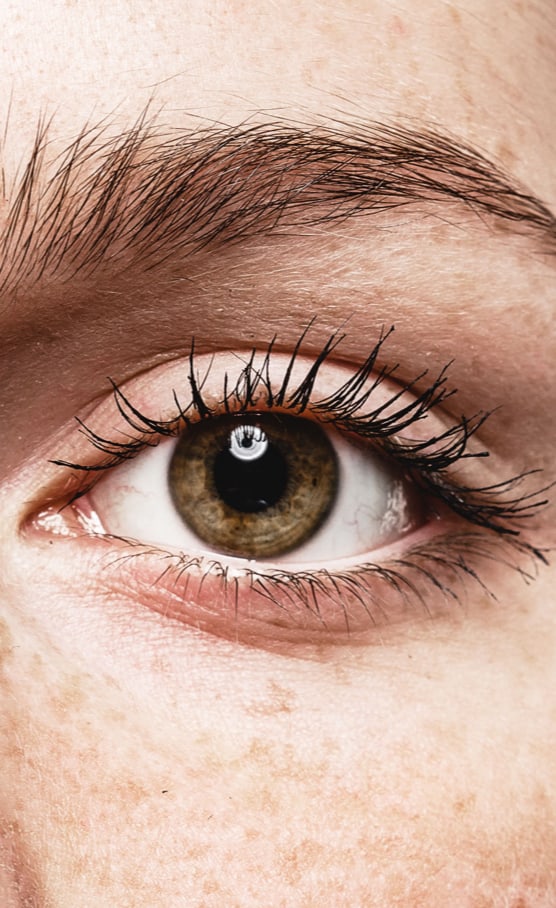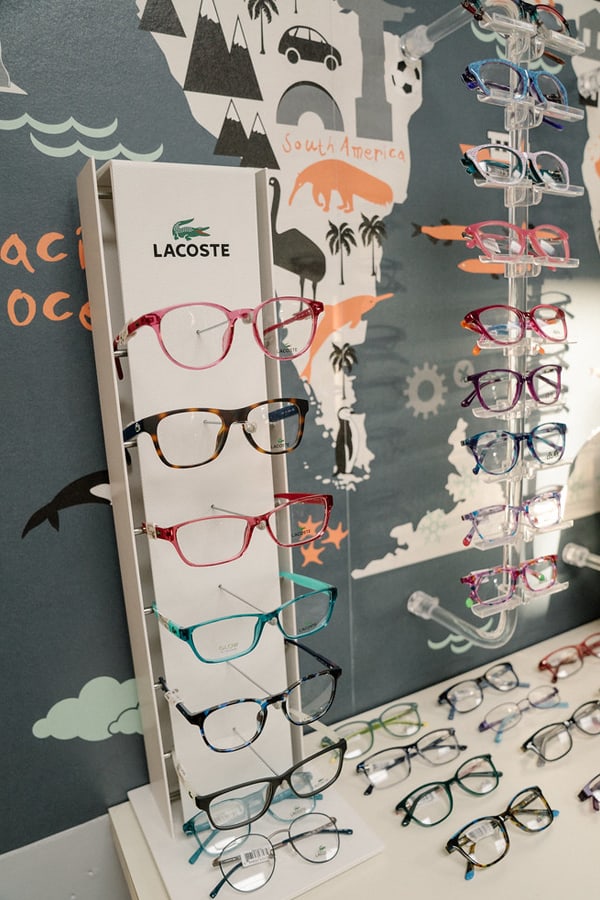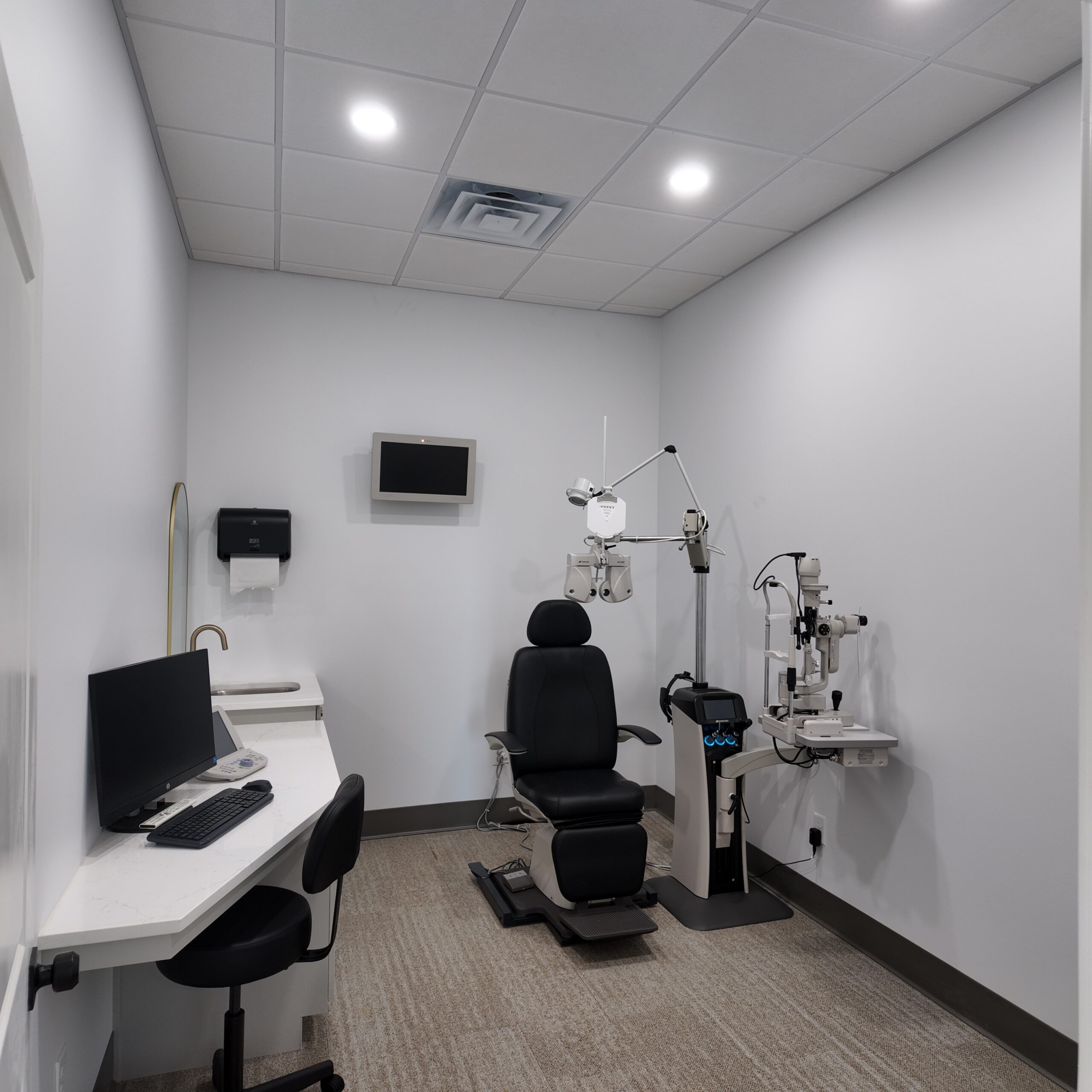Have you ever noticed specks drifting across your vision, brief flashes of light, or shadowy shapes that seem to dart away when you try to look at them directly? Floaters, flashes, and spots are usually harmless, but they can sometimes signal a more serious eye condition.
Here’s a quick breakdown:
- Floaters are small clumps of gel or cells inside the eye’s vitreous that cast shadows on the retina.
- Flashes may occur when the vitreous tugs on the retina, often described as brief bursts of light.
- Spots are often another term for floaters, but can also refer to areas of blurry or obstructed vision.
If you’re concerned about your flashes, floaters, and spots, reach out to your optometrist to schedule an eye exam.
What Are Flashes in Vision?
Flashes in vision often appear as bursts of light, streaks, or flickering that occur when no actual light source is present. Some people describe them as resembling lightning flashes or camera flashes. These visual disruptions happen because of stimulation or irritation to the retina, which is the part of your eye responsible for processing light and sending signals to your brain.
Why Do I See Flashes in My Vision?
There are several reasons why you might experience flashes:
- Retinal detachment or tear: Sudden flashes can sometimes indicate a serious issue, such as a retinal tear or detachment. This occurs when the retina pulls away from its normal position, disrupting vision and, if untreated, potentially leading to blindness.
- Posterior vitreous detachment (PVD): With age, the vitreous gel inside your eye shrinks and separates from the retina. This natural process can stimulate the retina, causing flashes of light.
- Migraines: If flashes occur in both eyes and are accompanied by zig-zag lines, sparkling patches, or blindness in parts of your vision, you may be experiencing a migraine aura.
- Eye trauma: Physical impacts to the head or eye can also trigger flashes.
If you’re seeing flashes for the first time or experiencing them alongside other symptoms, such as a sudden onset of floaters or loss of vision, contact your optometrist or ophthalmologist immediately.
What Are Eye Floaters?

Floaters are tiny shapes or specks that seem to drift across your field of vision. They may look like squiggly lines, cobwebs, or small dots, and they often move when you move your eyes. When you try to focus on them, they often seem to dart away.
Floaters are particularly noticeable when you’re looking at a bright background, like a clear sky or a blank computer screen. While floaters are usually harmless, many people find them distracting or unsettling.
Why Do I Have Eye Floaters?
Floaters occur when tiny clumps or strands form within the vitreous gel that fills the inside of your eye. These clumps cast shadows on the retina, which you then perceive as floaters. While floaters are common, especially as we age, certain conditions can increase the likelihood of their presence:
- Aging and vitreous changes: The vitreous gel naturally shrinks and becomes more liquid with age, occasionally leading to floaters.
- Eye injuries and surgeries: Trauma or invasive procedures can lead to changes in the vitreous or retina and increase floaters.
- Retinal tears or detachments: Similar to flashes, floaters can sometimes indicate more serious retinal damage.
- Inflammation (Uveitis): Conditions causing inflammation in the eye can lead to debris forming inside the vitreous, contributing to floaters.
If floaters appear suddenly, become significantly more noticeable, or are accompanied by flashes of light, consult an eye care professional promptly.
Can Sun Damage Cause Eye Floaters?
Though sun damage doesn’t directly cause floaters, prolonged exposure to ultraviolet (UV) rays can increase your risk for other eye conditions that might lead to changes in your vision. For example, UV exposure is linked to conditions like cataracts and macular degeneration, which can affect overall eye health and may, in the long term, contribute to symptoms like floaters.
To protect your eyes from the sun, wear UV-blocking sunglasses and wide-brimmed hats when outdoors, even on cloudy days.
What Are Sun Spots in Vision?
Sunspots in vision, or photopsias, are not literal sunspots but visual disturbances that appear as bright spots, halos, or blobs of light. You might notice them after staring at something intensely bright, such as the sun or a camera flash.
While these are often harmless and temporary, persistent sunspots or frequent occurrences can be indicative of underlying issues within the retina or optical pathways in your brain.
Why Am I Seeing Sunspots for No Reason?
If you’re noticing sunspots without an obvious cause, it may stem from one of the following reasons:
- Eye fatigue from prolonged screen time or reading without pauses.
- Retinal damage or irritation due to issues like retinal detachment, tears, or diabetic retinopathy.
- Visual aura from migraines often appears as shimmering or flashing lights.
- Circulatory issues, such as reduced blood flow to the eyes, may result in temporary spots.
If these events recur frequently or come with additional symptoms like headache or blurred vision, seek professional advice to rule out complications.
Key Takeaways
- Flashes occur due to retinal irritation, migraines, or changes in the vitreous gel. They can signal serious issues like retinal detachment.
- Floaters result from tiny clumps in the vitreous casting shadows and are a normal part of aging, but sudden increases warrant professional attention.
- Sun damage doesn’t directly cause floaters but can impact eye health over time. Always wear UV protection outdoors.
- Sunspots can stem from prolonged exposure to bright lights, eye fatigue, or underlying conditions like migraine auras or blood flow issues.
Your vision is essential, and early detection is key to managing potential eye health issues. If you’ve noticed sudden changes in your vision, including persistent flashes or an increase in floaters, don’t wait. Schedule an eye exam with Insights Optical today. We’re here to provide clarity, comfort, and care for your vision needs.





























